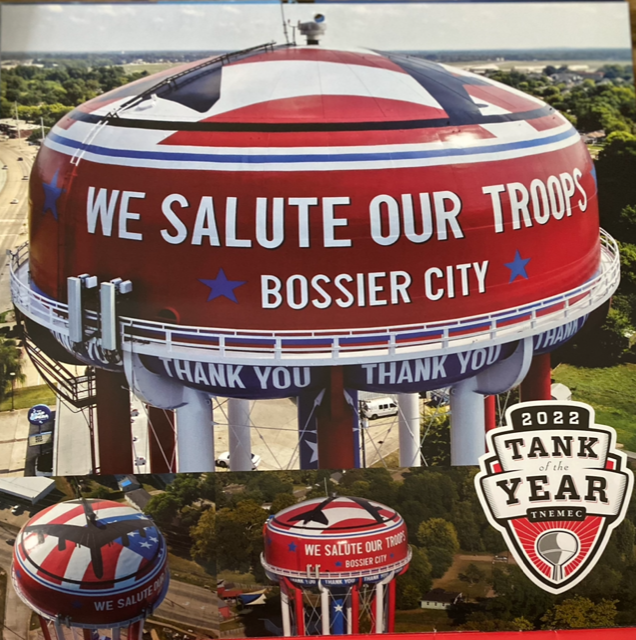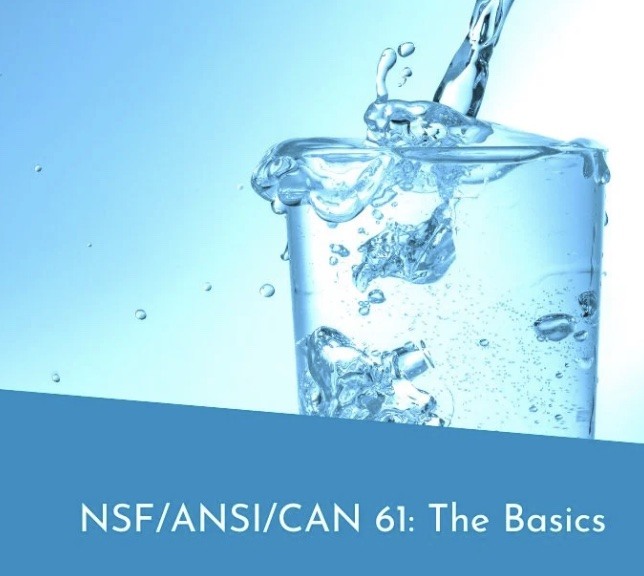
How to Read a Coating Specification Without Being an Engineer
Whether you're a project manager, facility owner or contractor, this guide will help decode coatings specifications and understand what should be included.
- High Performance Coatings
The success of any architectural or industrial project begins with a quality coating specification. The ability to read and interpret that specification is crucial for understanding the project scope and requirements.
How to Read a Coating Specification Without Being an Engineer:
If you've ever stared at a coating specification document and felt like you were reading a foreign language, you're not alone. These technical documents are packed with industry jargon, mysterious abbreviations, and specifications that can seem overwhelming. But here's the thing: you don't need an engineering degree to understand the essentials.
Whether you're a project manager, facility owner, contractor, or simply someone who needs to make informed decisions about protective coatings, this guide will help you decode these documents and focus on what really matters.
Why Coating Specifications Matter
Before diving into the details, let's establish why these documents are so important. A coating specification is essentially a blueprint that tells you:
- What coating system to use
- How to apply it properly
- When and where it should be applied
- What standards the work must meet
Getting this wrong can mean the difference between a coating that lasts 20 years and one that fails in 2 years. That's a costly mistake that proper specification reading can help you avoid.
Start with the Big Picture
Every coating specification should begin with an overview section. Look for:
Project Description: This tells you what you're protecting (steel structure, concrete floor, storage tank, etc.) and what environment it will face (marine, industrial, residential).
Performance Requirements: This is often stated in plain language, such as "provide 15-year corrosion protection" or "withstand chemical exposure from automotive fluids."
System Overview: Usually a summary table showing the complete coating system from primer to topcoat.
Decoding the Key Sections
Surface Preparation Requirements
This section is critical because surface prep determines 80% of coating performance. Look for:
- Cleanliness standards: Often referenced as SSPC (Steel Structures Painting Council) or NACE standards
- Profile requirements: Usually measured in "mils" (thousandths of an inch)
- Environmental conditions: Temperature and humidity requirements during prep
Translation: If you see "SSPC-SP10" or "Near-White Blast," it means extensive surface preparation. "SSPC-SP6" or "Commercial Blast" is less intensive but still thorough.
Material Specifications
Don't get bogged down in chemical formulas. Focus on:
- Product names and manufacturers: These should be specific, not generic
- Mixing ratios: Critical for two-component products
- Pot life: How long you have to use mixed material
- Coverage rates: How much area one gallon will cover
Example of Good Material Specification: "Prime coat shall be Tnemec Series 90-97 Tneme-Zinc, mixed at 3:1 ratio by volume (Part A to Part B), with 4-hour pot life at 75°F. Apply at 2.5-3.0 mils DFT, covering approximately 640 square feet per gallon at specified thickness."
This gives you everything needed: exact product, mixing instructions, working time, and coverage expectations.
Application Requirements
This tells you how to apply the coating:
- Method: Brush, roller, spray (and what type of spray)
- Number of coats: Self-explanatory but crucial
- Wet film thickness (WFT): How thick each coat should be when applied
- Dry film thickness (DFT): Final thickness after drying
- Recoat windows: Time limits between coats
Performance Criteria and ASTM Testing
This section often intimidates non-engineers, but it's actually one of the most important parts to understand because it defines exactly what the coating must accomplish.
Performance Criteria translate into real-world expectations:
- Salt spray resistance (ASTM B117): How well the coating resists corrosion in marine or road salt environments
- Adhesion testing (ASTM D4541): Ensures the coating won't peel or delaminate
- Impact resistance (ASTM D2794): Whether the coating can withstand physical damage
- Chemical resistance (ASTM D1308): How the coating holds up against specific chemicals
- UV resistance (ASTM G154): Protection against sun damage and color fading
- Abrasion resistance (ASTM D4060): Durability under foot traffic or equipment contact
Why ASTM Testing Matters:
ASTM (American Society for Testing and Materials) standards provide objective, repeatable ways to measure coating performance. When a specification references ASTM tests, it means:
- Accountability: There's a measurable standard the coating must meet
- Comparison: You can compare different coating options using the same criteria
- Prediction: Test results help predict real-world performance
- Quality Assurance: You have objective criteria to verify the coating meets requirements
How to Read Performance Requirements:
Instead of getting lost in test numbers, focus on what they mean for your project:
- ASTM B117, 1000 hours: This coating should resist corrosion for several years in moderate coastal environments
- ASTM D4541, >350 psi: The coating has strong adhesion and shouldn't peel under normal conditions
- ASTM G154, 2000 hours: Expect good color retention and UV protection for 5-10 years depending on exposure
Real-World Example: A specification might state "Tnemec Series 90-97 Tneme-Zinc shall meet ASTM B117 salt spray testing for minimum 1000 hours with less than 1/16" creepage from scribe." This tells you exactly what product to use and what performance to expect.
Similarly, for a topcoat, you might see "Tnemec Series 1074 Endura-Shield shall demonstrate ASTM D4541 adhesion of minimum 400 psi and ASTM G154 UV resistance of 2000 hours with ΔE <2 color change." This provides specific, measurable performance criteria.
Red Flag: If a specification lacks performance criteria or ASTM references, you have no way to verify if the coating will actually meet your needs. This is like buying a car without knowing its gas mileage, safety rating, or warranty terms.
Essential Abbreviations and Terms
DFT/WFT: Dry Film Thickness/Wet Film Thickness (measured in mils) VOC: Volatile Organic Compounds (environmental consideration) Pot Life: Working time after mixing components Recoat Window: Time frame for applying the next coat Cure Time: How long before the coating reaches full properties Tack Free: When coating is no longer sticky to touch ASTM: American Society for Testing and Materials (sets industry testing standards) psi: Pounds per square inch (pressure measurement for adhesion tests) Salt Spray Hours: Duration of corrosion resistance testing (higher = better protection)
Red Flags to Watch For
Vague Language
Avoid specifications that use terms like "suitable coating" or "equivalent products." Good specs name specific products and manufacturers.
Missing Environmental Conditions
If temperature, humidity, or other environmental requirements aren't specified, the spec is incomplete.
Unrealistic Expectations
Be wary of specifications promising exceptional performance with minimal surface preparation or unusually thin coatings.
No Quality Control
Look for inspection requirements, acceptance criteria, and testing protocols. If these are missing, how will you know if the work is done correctly?
Making Sense of Technical Data Sheets
Each coating product should have a technical data sheet (TDS). Focus on these sections:
Recommended Uses: Confirms the product matches your application Limitations: What it's NOT suitable forApplication Data: Temperature ranges, mixing instructions, coverage rates Performance Properties: Chemical resistance, durability expectations
Practical Implementation Tips
Ask Questions
If something isn't clear, ask. Reputable coating manufacturers and specifiers want their products used correctly and are usually happy to clarify.
Verify Product Availability
Ensure specified products are actually available in your area and timeframe.
Consider Local Conditions
A specification written for a different climate or environment may need adjustment for your location.
Plan for Inspection
Understand what will be measured and how. Common measurements include film thickness, adhesion, and visual standards.
Quality Control Checkpoints
Even without engineering expertise, you can monitor key quality indicators:
- Surface preparation meets visual standards (often illustrated in the spec)
- Proper mixing ratios are followed (usually marked on containers)
- Film thickness measurements fall within specified ranges
- Environmental conditions are appropriate during application
- Recoat timing is observed
- Performance testing is conducted when specified (adhesion tests, etc.)
- Documentation of test results is maintained for warranty purposes
Understanding that performance criteria aren't just technical hurdles but actual measures of whether your coating investment will deliver the protection you need helps justify the time and cost involved in proper testing.
When to Call in the Experts
While this guide helps you understand the basics, certain situations require professional expertise:
- Complex multi-coat systems with strict timing requirements
- High-performance coatings for extreme environments
- Projects where failure would have serious safety or financial consequences
- When specifications reference advanced testing or certification requirements
Bottom Line
Reading a coating specification doesn't require an engineering degree, but it does require attention to detail and understanding what matters most. Focus on the performance requirements, surface preparation, application methods, and quality control measures. When in doubt, don't hesitate to consult with coating professionals.
Remember: a good coating specification should be clear enough for qualified applicators to follow without guesswork. If you're struggling to understand critical requirements, the specification itself may need improvement.
The goal isn't to become a coating engineer overnight, but to become an informed consumer who can ask the right questions, spot potential problems, and ensure that coating projects deliver the protection and performance you're paying for.
Quick Reference Checklist
When reviewing any coating specification, ask yourself:
- Is the performance requirement clearly stated?
- Are specific products and manufacturers named?
- Are surface preparation requirements detailed and realistic?
- Are application conditions and methods specified?
- Are inspection and acceptance criteria included?
- Do I understand the critical timing requirements?
- Are there provisions for weather delays or other contingencies?
- Are performance criteria and ASTM testing requirements specified?
- Do the test standards match my project's actual environmental conditions?
- Is there a plan for documenting test results and performance verification?
LET OUR KNOWLEDGE AND EXPERTISE HELP ENSURE YOUR NEXT PROJECT IS SUCCESSFUL

Protecting Your Investment: Why Fluoropolymer is...
Discover the unparalleled benefits of using...

NSF-Approved Coatings for Potable Water Tanks
Safe and Clean drinking water is crucial, but how...

Custom Coating Solutions for Your Water Tank
When you want nothing more than to ensure the...